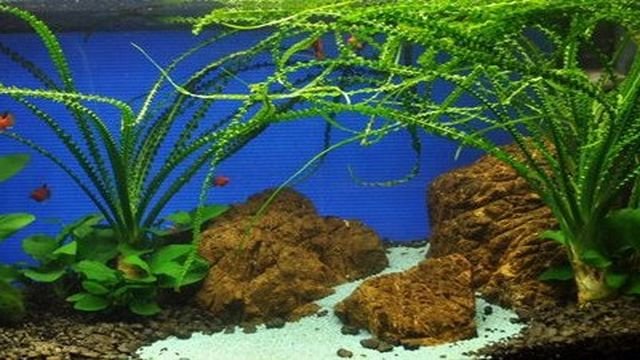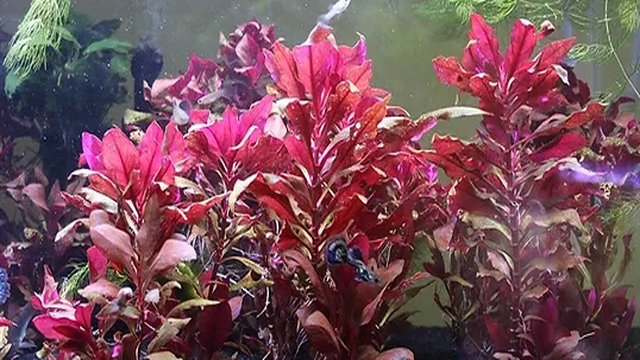Four Leaf Clover Aquarium Plant
The four-leaf clover aquarium plant is a visually appealing and beneficial addition to any fish tank. Its vibrant green leaves and distinctive clover shape add a natural touch of beauty to your aquarium.
This article explores the characteristics and care needs of the four-leaf clover plant, as well as the advantages of incorporating it into your tank.
Discover the wonders of aquatic plants and elevate your aquarium experience with this stunning plant.
Key Takeaways
- The Four-Leaf Clover Aquarium Plant exhibits a creeping growth habit with horizontal stems and has leaves that are four-leaf clover-shaped.
- It requires moderate to high lighting levels and benefits from regular fertilization with iron, potassium, and micronutrients.
- The plant thrives in slightly acidic to neutral water conditions and prefers soft to moderately hard water.
- It is suitable for beginners due to its low to moderate lighting requirements and can tolerate a wide range of water parameters, including temperature and pH fluctuations.
Characteristics of the Four-Leaf Clover Aquarium Plant
The four-leaf clover aquarium plant has unique characteristics that make it a popular choice for fish tank enthusiasts.
When it comes to growth patterns, this plant exhibits a creeping habit, with its stems spreading horizontally along the substrate. Its leaves are four-leaf clover-shaped, hence the name, and they grow in clusters along the stems. These leaves are vibrant green in color, adding a touch of beauty to any aquarium.
In terms of lighting requirements, the four-leaf clover aquarium plant is considered a low to moderate light plant. It thrives under moderate lighting conditions, but can also tolerate low light environments. However, intense lighting may cause the leaves to fade or become yellow. Therefore, providing the right amount of light is essential for the healthy growth of this aquatic plant.
Care Requirements for the Four-Leaf Clover Aquarium Plant
To properly care for the four-leaf clover aquarium plant, you’ll need to follow specific care requirements. Here are the key factors to keep in mind:
- Water parameters: The four-leaf clover plant thrives in slightly acidic to neutral water conditions, with a pH ranging from 6.0 to 7.5. It also prefers soft to moderately hard water with a dKH range of 2 to 10. Maintaining stable water parameters is crucial for the plant’s health and growth.
- Lighting requirements: Providing adequate lighting is essential for the four-leaf clover plant. It requires moderate to high lighting levels, with an intensity of 2 to 3 watts per gallon. Using full-spectrum LED or fluorescent lights with a color temperature of around 6500K will support optimal photosynthesis.
- Nutrient supplementation: The four-leaf clover plant benefits from regular fertilization. Adding a liquid fertilizer rich in iron, potassium, and micronutrients will promote healthy growth and vibrant foliage.

Benefits of Adding the Four-Leaf Clover Aquarium Plant to Your Tank
Adding the four-leaf clover aquarium plant to your tank brings numerous benefits.
One of the advantages of this plant is its compact growth pattern, which makes it ideal for small or nano aquariums. The four-leaf clover, scientifically known as Marsilea quadrifolia, forms a dense carpet of clover-like leaves that provide a natural and aesthetically pleasing look to your tank.
This plant thrives in low to moderate lighting conditions, making it suitable for beginners. Additionally, the four-leaf clover is a hardy plant that can tolerate a wide range of water parameters, including temperature and pH fluctuations.
It also helps to oxygenate the water and provides a hiding place for small fish and shrimp.
Tips for Propagating and Maintaining the Four-Leaf Clover Aquarium Plant
To successfully propagate and maintain the four-leaf clover aquarium plant, you can follow these helpful tips:
- Four leaf clover propagation:
- Start by taking a healthy, established plant with multiple stems.
- Gently separate the stems and trim any excess roots.
- Plant each stem individually, making sure to bury at least half of it in the substrate.
- Provide ample light and nutrients to promote root growth.
- Four leaf clover maintenance:
- Maintain a temperature range of 68-82°F (20-28°C) for optimal growth.
- Ensure proper lighting with a minimum of 2 watts per gallon.
- Regularly trim the plant to encourage bushier growth and prevent overcrowding.
- Perform regular water changes to maintain water quality and prevent nutrient build-up.

Common Issues and Troubleshooting for the Four-Leaf Clover Aquarium Plant
If you are experiencing common issues with your four-leaf clover aquarium plant, here are some troubleshooting tips to help you resolve them.
One common issue with the four-leaf clover aquarium plant is algae growth. To prevent this, it is important to maintain proper water conditions. Ensure that your aquarium receives the right amount of light and nutrients, as excessive amounts can promote algae growth. Additionally, regular water changes and proper filtration can help control algae growth.
Another issue that may arise is selecting the right substrate for your four-leaf clover aquarium plant. This plant prefers a substrate that is rich in nutrients and has a fine grain size. Consider using a planted aquarium substrate or a mixture of nutrient-rich soil and sand. This will provide the necessary nutrients for the plant’s growth and development.
Here is a table summarizing the troubleshooting tips for common issues with the four-leaf clover aquarium plant:
| Common Issues | Troubleshooting Tips |
|---|---|
| Algae Growth | – Maintain proper water conditions |
| – Control light and nutrient levels | |
| – Regular water changes and filtration | |
| Selecting Substrate | – Use a substrate rich in nutrients |
| – Consider planted aquarium substrate or nutrient-rich soil |
Frequently Asked Questions
What Is the Ideal Water Temperature for the Four-Leaf Clover Aquarium Plant?
To maintain the ideal water temperature for the four-leaf clover aquarium plant, follow these tips: Use a heater to regulate the water temperature, ensuring it stays between 68-78 degrees Fahrenheit for optimal growth.
Can the Four-Leaf Clover Aquarium Plant Survive in Low Light Conditions?
Yes, the four-leaf clover aquarium plant can survive in low light conditions. It can be grown in a sand substrate and some suitable tank mates for it include small fish like neon tetras.
How often should I fertilize the four-leaf clover aquarium plant?
To fertilize the four-leaf clover aquarium plant, you should follow a regular schedule. Every two weeks, use a liquid aquarium fertilizer that provides essential nutrients.
Should I consider the water pH when fertilizing the four-leaf clover aquarium plant?
Yes, the water pH affects the plant’s growth. It is important to consider the pH level of the water when fertilizing the four-leaf clover aquarium plant.
Can I propagate the four-leaf clover aquarium plant through cuttings?
Yes, you can propagate the four-leaf clover aquarium plant through cuttings. This is a common method to create more plants and expand your aquarium garden.
Can the Four-Leaf Clover Aquarium Plant Be Grown Emersed?
Yes, the four-leaf clover aquarium plant can be grown emersed. However, it is more commonly cultivated submerged. It can also be grown hydroponically and propagated through cuttings for easy propagation.
Are There Any Known Pests or Diseases That Commonly Affect the Four-Leaf Clover Aquarium Plant?
Yes, there are common pests and diseases that can affect the four-leaf clover aquarium plant. These include algae, snails, and fungal infections.
How can I prevent these issues?
To prevent these issues, it is important to maintain proper water quality and lighting in your aquarium. This includes regular water changes and ensuring the appropriate levels of nutrients and lighting for the plant.
What should I do if my plant becomes infested?
If you notice any signs of infestation, such as excessive algae growth or the presence of snails, it is important to take action promptly. You can treat the infestation with appropriate medications or natural remedies, depending on your preference and the severity of the issue. Regularly cleaning the tank and removing any affected plant material can also help control the infestation.
Conclusion
In conclusion, the Four-Leaf Clover Aquarium Plant is a fascinating addition to any fish tank. With its unique characteristics and low maintenance requirements, it’s a great choice for both beginner and experienced aquarium owners.
Adding this plant to your tank not only enhances its aesthetic appeal but also provides numerous benefits such as oxygenation and water filtration. Did you know that studies have shown that having plants in your aquarium can reduce stress and anxiety in both fish and humans?
So why wait? Get yourself a Four-Leaf Clover Aquarium Plant and create a serene and healthy environment for your aquatic friends.

